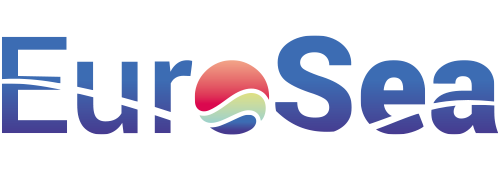
Description
EOVs are critical parameters or sets of parameters that provide a comprehensive assessment of the oceanic state. Historically, the identification, prioritization, and monitoring of EOVs may have been disjointed or lacked a cohesive framework. The creation of a well-defined framework for mapping EOVs represents a structured and systematic approach to enhancing our understanding and monitoring of the ocean.
Impact During the Project
Streamlined Observation:
Traditional State: Historically, ocean observations might have been conducted based on varying priorities, possibly leading to data gaps or overlapping efforts.
Advancement: With a clear framework, EOVs can be effectively prioritized, ensuring that essential observations are consistently addressed and redundancies are minimized.
Enhanced Data Consistency and Comparability:
Traditional State: Different monitoring initiatives might have used varying standards or protocols, making data consolidation and comparison challenging.
Advancement: A unified framework provides standardized observing requirements, ensuring consistent data collection methods and facilitating comparative studies and analyses.
Higher TRL for Ocean Monitoring and Forecasting:
Traditional State: In the absence of a uniform framework, the readiness level of ocean monitoring and forecasting systems might have been inconsistent or limited to specific scenarios.
Advancement: With the EOV framework in place, ocean monitoring and forecasting systems’ TRL increases, indicating more extensive applicability, improved reliability, and adaptability to various situations.
Impact Post Project
Facilitated Collaboration:
The standardized framework can serve as a common reference point for various stakeholders, fostering better collaboration between entities involved in ocean research and monitoring.
Informed Decision-making and Policy Formulation:
A cohesive understanding of EOVs and their observation requirements allows policymakers and decision-makers to formulate informed strategies and policies for ocean conservation, utilization, and management.
Development of a UN Decade Project:
Traditional State: Before the establishment of the framework, efforts to integrate EOVs into larger global projects might have been fragmented or lacked a cohesive vision.
Advancement: The EOV framework paves the way for the development of a UN Decade project, aiming to consolidate global efforts and create a universally accepted process for ocean monitoring and forecasting.
Advancement over and above State of the Art
The introduction of a tailored framework for mapping EOVs signifies a major advancement in the ocean monitoring domain. It provides structure, direction, and standardization, addressing the traditional challenges of inconsistent data collection methods, redundant efforts, and data fragmentation. The immediate impact is evident in streamlined observations, enhanced data consistency, and a higher TRL for monitoring and forecasting systems. In the long run, this advancement fosters better collaboration, informed decision-making, and the possibility of integrating the framework into larger global initiatives, such as the UN Decade project, thereby marking a significant leap over previous state-of-the-art practices.
Links and References
Link to D4.5 – Skill assessment of ECV/EOV from seasonal forecast: https://eurosea.eu/download/eurosea_d4-6_skill_assessment_of_ecv_eov_from_seasonal_forecast_revised_resubmitted/?wpdmdl=5565&refresh=650197c8d14c21694603208
